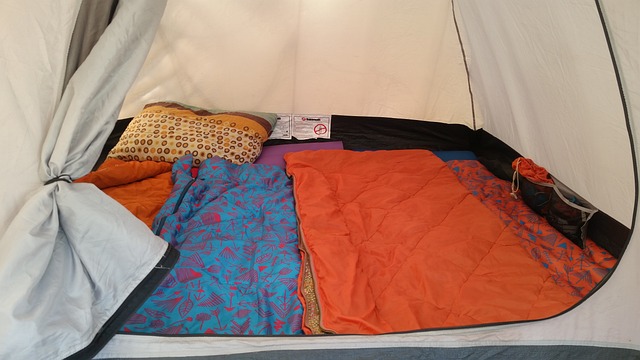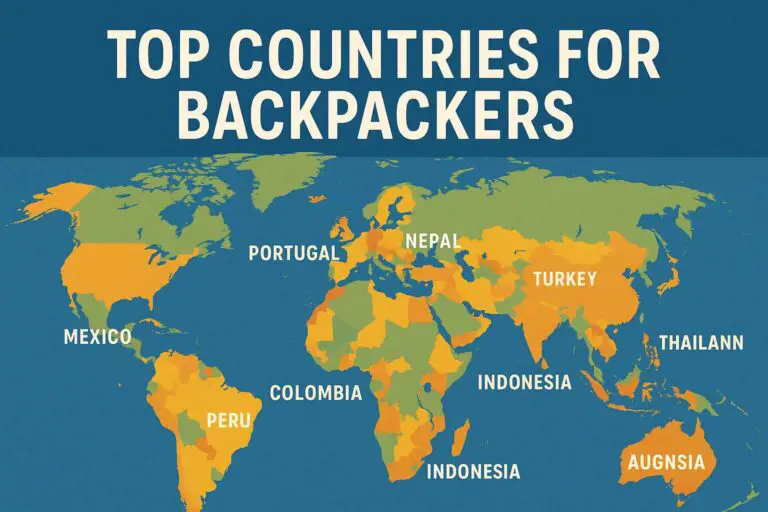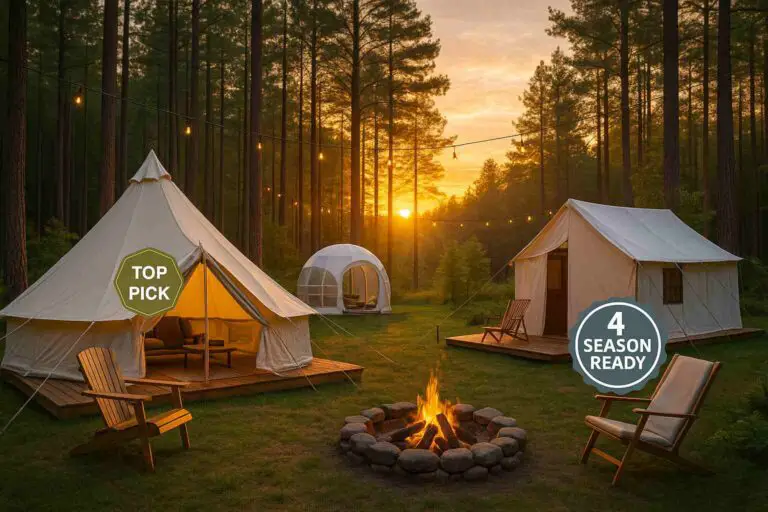Getting a good night’s sleep is important, especially when camping. It becomes even more crucial when it comes to your child’s sleeping arrangements. Knowing how to Choose the right sleeping bag for your child can make all the difference between a restful night and a restless one.
That’s why in this guide, I will discuss the important factors you need to consider when choosing a sleeping bag for your child. I’ll also provide tips and recommendations to help you make an informed decision and ensure your child is warm and comfortable while sleeping under the stars.
Let’s dive in!
Factors to consider when choosing a sleeping bag for your child
When choosing a sleeping bag for your child, there are several factors to consider. Here are 6 of the most important factors you need to keep in mind.
1. Temperature rating –
The temperature rating indicates the lowest temperature that the sleeping bag is designed to keep your child warm. You want to make sure that the sleeping bag you choose is appropriate for the camping conditions. A sleeping bag with a temperature rating that is too low may leave your child cold, while a sleeping bag with a temperature rating that is too high may cause your child to overheat.
2. Insulation type
Sleeping bags come with different types of insulation, such as down and synthetic. Each insulation type has its advantages and disadvantages, so it’s important to choose the right one for your child’s needs.
3. Size and fit
A properly fitting sleeping bag is crucial to keep your child warm and comfortable. Make sure to measure your child’s height and choose the right size sleeping bag accordingly. You also want to consider the shape of the sleeping bag – mummy bags are more snug and efficient at retaining heat, while rectangular bags offer more space but may not be as warm.
4. Weight and packability
Consider how often you will be traveling with the sleeping bag and how important weight and packability are to you. A lighter and more packable sleeping bag may be more convenient for backpacking trips, while a heavier sleeping bag may be more suitable for car camping.
5. Durability
Choose a sleeping bag that is made of durable materials and is built to last. You want a sleeping bag that can withstand wear and tear over time and multiple camping trips.
6. Price
Sleeping bags come at various price points. While you want to invest in a good-quality sleeping bag for your child’s comfort, you also want to make sure it fits within your budget. Consider what features are most important to you and choose a sleeping bag that offers the best value for your money.
Understanding temperature ratings
The temperature rating of a sleeping bag is one of the most important factors to consider when choosing a sleeping bag for your child. The temperature rating indicates the lowest temperature that the sleeping bag is designed to keep your child warm. It’s essential to choose a sleeping bag with an appropriate temperature rating for the camping conditions.
Sleeping bags come with three types of temperature ratings: comfort, limit, and extreme. Comfort rating indicates the lowest temperature at which a person can sleep comfortably in the sleeping bag. The limit rating indicates the lowest temperature at which a person can sleep for eight hours without waking up due to cold. The extreme rating indicates the lowest temperature at which the sleeping bag can keep a person from freezing to death.
When choosing a sleeping bag for your child, consider the expected temperature range of the camping conditions. You want to choose a sleeping bag with a temperature rating that matches the expected low temperature. It’s better to choose a sleeping bag with a temperature rating that is a little lower than the expected low temperature, as this allows for unexpected drops in temperature.
Remember that factors such as your child’s metabolism, health, and clothing also affect how warm they feel in a sleeping bag. It’s essential to choose a sleeping bag that matches your child’s needs and comfort level.
Types of insulation
The insulation type of a sleeping bag is another important factor to consider when choosing a sleeping bag for your child. There are two main types of insulation: down and synthetic.
- Down insulation – Down insulation is made from the soft, fluffy undercoating of geese and ducks. It is lightweight, compressible, and provides excellent warmth retention. Down sleeping bags are perfect for cold, dry conditions, but they are not as effective when wet. They also require special care, as they can clump up and lose their insulation properties when compressed.
- Synthetic insulation – Synthetic insulation is made from man-made materials like polyester, and it is designed to mimic the insulating properties of down. Synthetic sleeping bags are generally less expensive than down sleeping bags and can still keep your child warm, even when wet. They are also easier to care for and can withstand more wear and tear than down sleeping bags. However, they are generally heavier and less compressible than down sleeping bags.
When choosing a sleeping bag for your child, consider the camping conditions and your child’s personal preferences. Down sleeping bags are great for colder, drier climates, while synthetic sleeping bags are more versatile and can handle wet conditions better. If you’re looking for a budget-friendly option, a synthetic sleeping bag may be the way to go.
Size and fit
Size and fit are essential when choosing a sleeping bag for your child. A sleeping bag that is too small or too large can affect your child’s comfort and warmth. Here are some factors to consider when choosing the right size and fit for your child’s sleeping bag:
- Measure your child – Measure your child’s height and compare it to the sleeping bag’s dimensions to ensure a good fit. The sleeping bag should be at least a few inches longer than your child to accommodate their head and feet comfortably.
- Choose the right shape – Sleeping bags come in different shapes, including rectangular, mummy, and semi-rectangular. Mummy-shaped sleeping bags are more snug and efficient at retaining heat, while rectangular sleeping bags offer more space but may not be as warm.
- Consider the weight – Choose a sleeping bag that is not too heavy for your child to carry or move around in.
- Check the sleeping bag’s age range – Sleeping bags are often designed for specific age ranges. Check the manufacturer’s recommendations to ensure that you’re choosing a sleeping bag that is appropriate for your child’s age and size.
When in doubt, choose a sleeping bag that is slightly larger than your child’s current size to accommodate growth and ensure that the sleeping bag can be used for more than one camping trip.
Weight and packability
Weight and packability are important factors to consider when choosing a sleeping bag for your child, especially if you plan on backpacking or hiking to your camping destination. Here are some things to keep in mind when considering weight and packability:
- Consider the weight – A lightweight sleeping bag is easier to carry and won’t add unnecessary weight to your backpack or camping gear. However, keep in mind that a lighter sleeping bag may not provide as much warmth as a heavier one.
- Look for compressibility – A sleeping bag that compresses well can save space in your backpack or camping gear. Look for a sleeping bag that can be easily packed into a stuff sack and won’t take up too much space.
- Consider the insulation type – Synthetic sleeping bags are generally less compressible than down sleeping bags, so keep this in mind when choosing an insulation type.
- Look for additional features – Some sleeping bags come with additional features that can make them easier to pack, such as compression straps or built-in stuff sacks.
Consider how often you will be traveling with the sleeping bag and how important weight and packability are to you. A lightweight and compressible sleeping bag may be more convenient for backpacking trips, while a heavier sleeping bag may be more suitable for car camping.
Durability: Choosing a sleeping bag that will last
Durability is an important factor to consider when choosing a sleeping bag for your child, as a well-made sleeping bag will last for many camping trips. Here are some things to keep in mind when considering durability:
- Materials – Look for a sleeping bag made of durable materials that can withstand wear and tear. Ripstop nylon is a common material used for sleeping bags, as it is lightweight and resistant to tears.
- Construction – Check the sleeping bag’s construction, including the stitching and zippers, to ensure they are well-made and won’t break easily.
- Reviews – Look at reviews from other campers to see how well the sleeping bag has held up over time.
- Care – Proper care and maintenance can help extend the life of your child’s sleeping bag. Make sure to follow the manufacturer’s instructions for care and storage.
Keep in mind that a higher-quality sleeping bag may be more expensive but will last longer and save you money in the long run. A durable sleeping bag will ensure that your child stays warm and comfortable for many camping trips to come.
Price: Factors that affect the price of a sleeping bag
Price is an important factor to consider when choosing a sleeping bag for your child. You want to choose a sleeping bag that is within your budget while still meeting your child’s needs for warmth and comfort. Here are some things to keep in mind when considering the price:
- Quality – A higher-quality sleeping bag may be more expensive but will last longer and provide better insulation. Cheaper sleeping bags may not provide as much warmth or durability.
- Brand – Some brands are known for their high-quality sleeping bags, while others are more budget-friendly. Do some research and compare prices and features from different brands.
- Features – Sleeping bags with additional features, such as draft collars or zippered pockets, may be more expensive than basic sleeping bags. Consider what features are important to you and your child and choose a sleeping bag with the features that fit your budget.
- Sales and discounts – Look for sales and discounts on sleeping bags, especially during the off-season. You may be able to find a high-quality sleeping bag at a lower price.
Consider your budget and what features are most important to you. Don’t sacrifice quality for the price, as a higher-quality sleeping bag will last longer and provide better insulation. Look for a sleeping bag that offers the best value for your money.
Tips for using and maintaining your child’s sleeping bag
Using and maintaining your child’s sleeping bag is important to ensure its longevity and effectiveness in keeping your child warm and comfortable. Here are some tips for using and maintaining your child’s sleeping bag:
- Preparing for use – Before using the sleeping bag, air it out and fluff it up to ensure maximum loft and insulation. This is especially important for down sleeping bags, as they can lose their insulation properties if compressed for long periods.
- Using a sleeping pad – A sleeping pad can provide additional insulation and cushioning between the sleeping bag and the ground, which can help keep your child warm and comfortable.
- Keeping the sleeping bag clean – Dirt, sweat, and oils from your child’s body can accumulate in the sleeping bag over time, affecting its insulation properties. Follow the manufacturer’s instructions for cleaning the sleeping bag, and avoid washing it too frequently, as this can reduce its insulation.
- Proper storage – When not in use, store the sleeping bag in a dry, cool, and well-ventilated area, ideally in a large storage sack or hanging in a closet. Avoid storing it in a stuff sack for extended periods, as this can compress the insulation and reduce its effectiveness.
- Repairs – Inspect the sleeping bag regularly for any signs of damage, such as rips or tears, and make repairs as soon as possible to prevent further damage.
By following these tips, you can ensure that your child’s sleeping bag remains in good condition and provides maximum warmth and comfort for many camping trips to come.
Conclusion
Choosing the right sleeping bag for your child is crucial to ensure a restful and comfortable camping experience. When choosing a sleeping bag, consider factors such as temperature rating, insulation type, size and fit, weight and packability, durability, and price. Make sure to measure your child and choose a sleeping bag that fits their size and shape. Consider how often you will be traveling with the sleeping bag and how important weight and packability are to you. Look for a sleeping bag made of durable materials that can withstand wear and tear. Choose a sleeping bag that provides good value for your money and meets your child’s needs for warmth and comfort.
Finally, follow the manufacturer’s instructions for using and maintaining the sleeping bag to ensure its longevity and effectiveness. With these tips and recommendations, you can choose the best sleeping bag for your child and ensure a comfortable and enjoyable camping experience.




